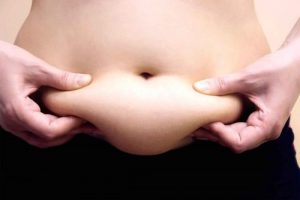Your liver is the largest internal organ of your body. Its major function is to filter blood coming from the digestive tract before passing it to the rest of the body. As such, the liver plays a role in detoxification, protein synthesis and aids in the production of chemicals for digestion.
While your body stores fat in various regions for energy and insulation; when excessive fat builds up in your liver it is called fatty liver disease. This is caused from poor lifestyle choices with nutrition and lack of exercise. Fatty liver is characterized by fat build up in its cells (when liver cells have more than 5 percent of fat) and it can have major consequences to your health.
Fatty liver disease is increasingly prevalent in many parts of the world. It is estimated that 25 percent of the world’s population is affected with the problem. Fatty liver disease can be classed into two categories- alcoholic liver disease (due to excessive alcohol consumption) and nonalcoholic fatty liver disease (NAFLD). Moreover, one can also have fatty liver disease as a result of pregnancy.
Although it is associated with obesity, type 2 diabetes and other problems marked by insulin resistance, it is rising obesity that is the leading cause behind the increasing prevalence of NAFLD throughout the world. No wonder, it is fast becoming one of the most common chronic liver problems globally. Fatty liver disease results in damage to the liver by restricting it from removing toxins and producing bile for the digestive system. So, in such a condition, the person becomes vulnerable to developing other chronic illnesses including Type 2 diabetes, kidney and heart disease.
Can exercise help to overcome fatty liver disease?
In the treatment of a fatty liver, it is essential for changes to be made to one’s lifestyle; including nutritional changes and exercise.
Physical activity can prove to be effective reducing liver fat. Several studies have revealed the significant role of exercise, including resistance training and cardiovascular training, in increasing mobilization of hepatic fat in people with NAFLD. The effect of exercise gets multiplied by combining exercise with dietary changes. A balanced diet, increased physical activity and exercise are vital to reduce the risk factors that result in fat penetration of liver cells.

Effects of exercise on fatty liver disease
Being sedentary in your life can lead to many negative health consequences, regular exercise is of utmost importance in losing weight. It is important to recognize that structured exercise is different from physical activity.
Exercise constitutes a planned, repetitive and structured subcategory done with a specified frequency, intensity and time. So, as per American College of Gastroenterology, the American Gastroenterological Association, and the American Association for the Study of Liver Diseases, physical exercise is considered to be a treatment for NAFLD since it results in successful intervention of intrahepatic fat reduction.
Different types of exercise like aerobic exercise (including walking and jogging), muscle strengthening or endurance exercise, and flexibility exercise are effective in control and prevention of fatty liver disease in individuals. As per a study by The American Gastroenterological Association, the American Association for the Study of Liver Diseases and American College of Gastroenterology, aerobic exercise (high-intensity interval training, i.e. HIIT)is a boon for treatment of NAFLD(since a study involving 28 people having type 2 diabetes performing HIIT for around 3 months showed a whopping 39 percent liver fat reduction) . However, people who cannot perform aerobic exercise as a result of restricted cardiorespiratory stamina can opt for resistance exercise or lower-intensity exercise to curb liver fat. Consistency is the key when it comes to exercise for controlling liver fat.
Studies reveal that doing resistance training or endurance exercise several times every week helps in reduction of fat in liver cells. This is irrespective of the weight loss. A study comprising of 18 obese adults suffering from NAFLD witnessed a decrease of 10 percent in liver fat after exercising for 30-60 minutes five days a week although their body weight did not show any noticeable change. So, even half an hour of moderate exercise for three to five times a week can reduce the symptoms of fatty liver disease and make one fitter and healthy.
Conclusion
To conclude, we can say that physical exercise has a proven beneficial impact on fatty liver disease since it is reversible at an early stage. Whether its strength training or cardiovascular training, the research supports the role of regular exercise to reduce liver fat.
Inspire Fitness for Wellbeing is an Award Winning team of Exercise Physiologists and Personal Trainers in Balwyn North. Our team design individual exercise programs to the unique needs of each client. With consideration of medical and injury backgrounds, we prepare an exercise plan that is right for you!
